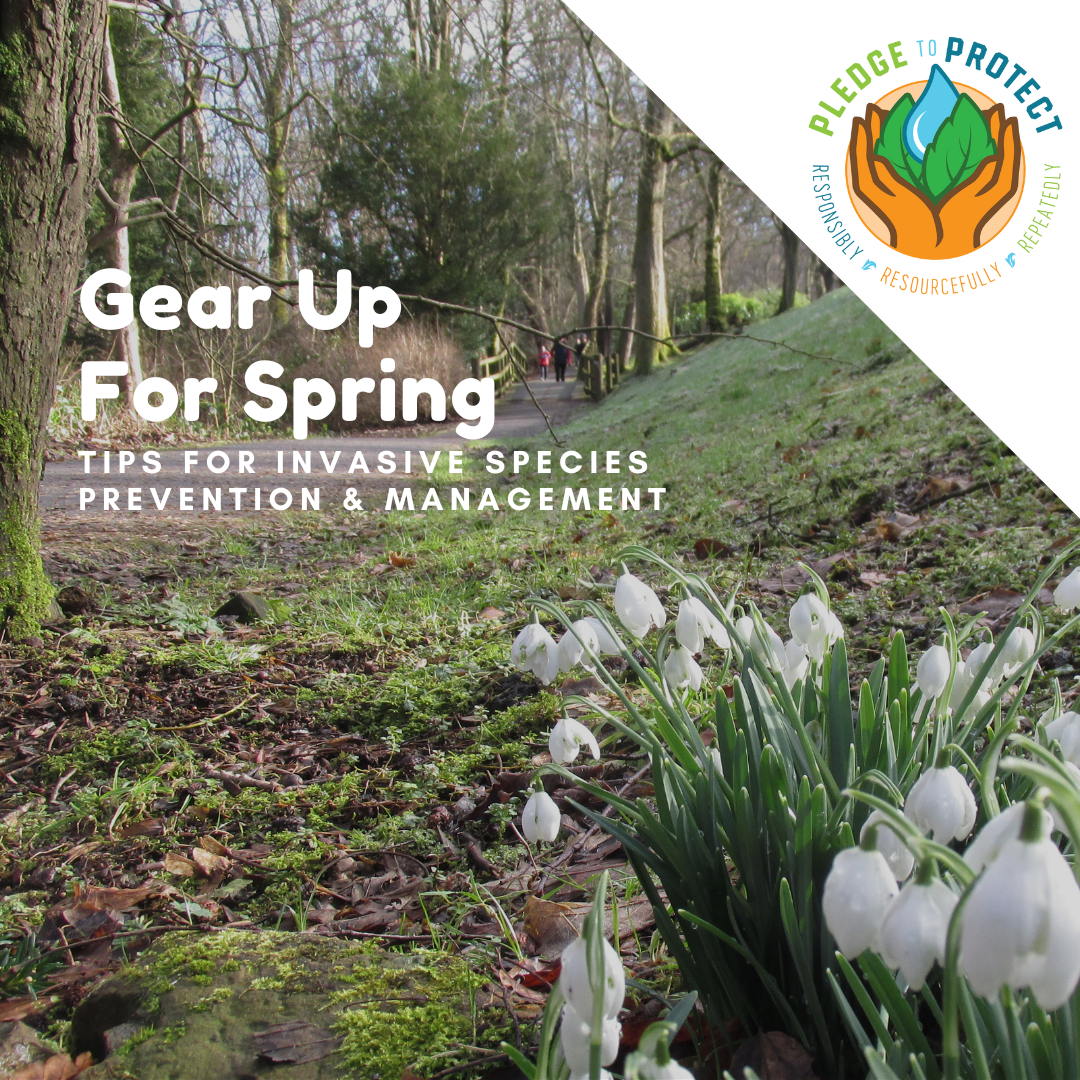Spring is coming! There are many ways you can help prevent the spread of invasive species while you enjoy your favorite springtime activities.
Tips for Birding
The excitement of returning birds may inspire you to put out birdfeeders. However, you should avoid placing feeders in hemlock trees because doing so will encourage visits from birds which may result in the introduction or spread of hemlock woolly adelgid (HWA)-an invasive insect that kills hemlock trees.
From March through April, second-generation hemlock woolly adelgid eggs hatch into nymphs or “crawlers”. During this time, crawlers can easily attach to birds and be spread to new areas.
A study was done by researchers with the University of Connecticut and the Connecticut Agricultural Experiment Station to explore how and when HWA could hitchhike on birds. They deployed bird decoys and placed them in trees as part of an experiment to see if HWA would crawl onto the birds and if they would attach when the decoys were brushed up against the branches. Decoys were deployed during migration and breeding seasons. Results showed that birds do pick up HWA most often during spring migration compared to breeding season; additionally, HWA were found on the mounted decoys which proved that they aren’t just passive hitchhikers. Learn more about this study in Entomology Today or directly from the scientific journal.

If you do deploy birdfeeders, consider joining the Tug Hill Bird Quest Hosted by the Tug Hill Tomorrow Land Trust. Participants will receive weekly emails that include birding tips, fun facts, activities, and more! Plus you will help aid community science by counting the number and species of birds that visit feeders during a specific observation week. Visit the THTLT Bird Quest webpage to learn more, sign up ends on March 31st.
Tips for Gardening
Spring is an exciting time to get your hands in the dirt and start planting your garden! One of the best ways you can prevent the spread of invasive plants is by choosing to grow native plants in your garden, as many desirable exotic plants have become invasive over time. Not only are native plants beautiful, but they provide food and habitat for native wildlife, and often require less maintenance than exotic ornamental plants. When choosing native plants to support pollinators, be sure to avoid cultivar varieties as they are often altered in a way that makes them unusable to pollinators.
Learn more about native alternatives to common invasive plants in this featured blog. Check out these Garden Protector’s Toolbox resources to learn what plants are native to your zipcode and of suggested plants native to the northeast. Source native plants in the Central New York area in this Native Plant Shopping Guide. Find local native plants and learn more about sustainable gardening at the Lazy Drit Flower Farm.

Get a Heard Start on Controlling Invasive Plants
Invasive plants often leaf out earlier than native plants. Some early emerging invasive plants you may start to notice popping up are giant hogweed, wild parsnip, garlic mustard, honeysuckle, and on the aquatic side, curly-leaf pondweed.
Getting a head start on controlling these early emerging invasive plants will help you keep them in check during the growing season. Begin by scouting your property for new seedlings of invasive plants. The softer ground in the spring makes it easier to pull or dig out plants. Applying landscape paper or plastic that blocks out the sun in early spring also helps to hinder the growth of terrestrial and aquatic invasive plants. It’s also easier to access and cut back woody bushes or vines in the spring which can help to weaken or kill some plants before the growing season. However, in some cases, cutting back stems can promote growth which is the case for honeysuckle as well as, common and glossy buckthorn, these plants require a treatment of herbicide after cutting to keep them from resprouting.
Learn more about early emerging invasive plants and how to control them in this Featured Blog

Virtual Toolboxes
Visit the Protector’s Virtual Toolboxes below to access resources themed for each category, and to learn more about how to protect your favorite outdoor spaces from invasive species.
Lands & Trails
Lands & Trails
Forests
Waters
Gardens
Communities
Did you enjoy this blog post? Take our Pledge to Protect and get monthly emails showcasing actions you can take to protect your favorite hiking trails, paddleways, forests, garden, and community from the impacts of invasive species!
Take the Pledge to Protect
The Pledge-to-Protect is a fun, positive, inviting, engaging and rewarding way to participate in invasive species prevention and management.
|
|





